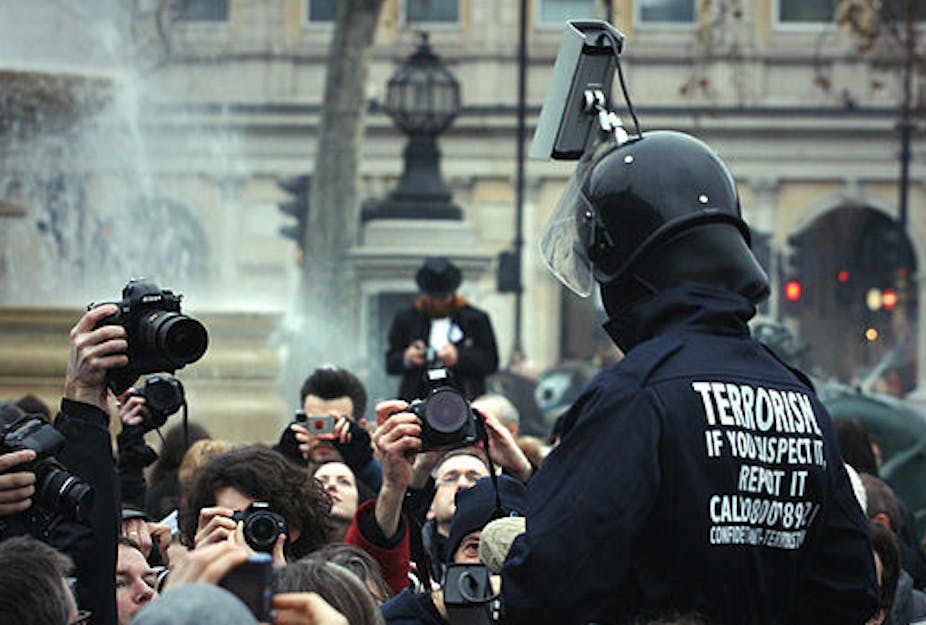Almost as quickly as the first responders in the aftermath of a terrorist attack arrive, come the second guessers. In the case of the horrendous incident in Woolwich last week, it was not long before it emerged that the suspects had been “known” to Britain’s domestic intelligence agency MI5.
The implicit (and in some cases explicit) suggestion on the part of the media was that the agency had failed to prevent the attack. The nature of the criticism equals that levelled against the Federal Bureau of Investigation after the Boston Marathon bombings.
Essentially, it amounts to the assertion that the knowledge an individual or individuals hold radical beliefs should automatically equate to stopping them from engaging in violence. It is a seductive view that is also misguided and unrealistic, for it displays an exaggerated sense of what a security agency can do in the current domestic counterterrorist climate in open and democratic societies and a misguided faith in countering terrorism as fool-proof activity.
Limited resources, limited response
Quite simply, neither MI5 nor the FBI has unlimited resources. In the UK, according to the Security Service itself, as of 2007 approximately 2000 people were being monitored because of their extreme views. This is the key point where the confusion arises. There seems to be an assumption that “monitoring” involves around the clock surveillance.
Only a small number of suspects in fact can be scrutinised in such an intense manner. That’s because even in an era of highly sophisticated technological surveillance, human resources are still required and the resource commitment can be quite high in intensive continual surveillance.
As the parliamentary committee that investigated the July 7 London bombings pointed out, to provide 24-hour-a-day surveillance against all potential terrorists would require an MI5 consisting of several hundred thousand members.
Limited resources mean targets have to be prioritised in the same way hospital emergency departments work. This process of risk management involves making a judgement as to which individuals or groups involve the greatest risk to the public.
Counterterrorism is by no means an exact science. As MI5 has previously admitted in a 2008 report, there is no unique route by which an individual moves into violent extremism and that those who do are “demographically unremarkable”. Generally, the larger the plot, the greater the threat to the wider society. But the more individuals involved, the easier it is to be discovered in comparison to small groups or “lone wolves”.
In Boston and Woolwich the involvement of a small number of people using crude weaponry to carry out unsophisticated attacks would, by definition, make them difficult to prevent. And this is quite apart from the wider issue of the difficulty in ascertaining who will become a terrorist in the first place instead of remaining radicalised but non-violent.
Even the news that one of the Woolwich suspects may have been trying to go Somalia to fight and was arrested in Kenya is not as significant as the second guessers would suggest. Hundreds of Britons have gone abroad in the name of jihad; few have engaged in violence upon their return, but even then the resources are not available for the intensive type of surveillance to monitor every single one of them all of the time.
Lessons from the Cold War
There is a historical parallel to the current domestic counter-terrorism environment from the Cold War. Surveillance over decades was carried out by the FBI and MI5 against known communists, but considerable effort was spent on trying to identify those who kept their far-left affiliation hidden.
Individuals would fall under suspicion because of the people they associated with, events they attended, even newspapers they read. With enough adverse references, a suspected communist could become a confirmed one. Nevertheless, on both sides of the Atlantic, only a small number of communists judged to be key threats faced continual surveillance and, even then, espionage still occurred.
As in the past, today the best efforts of the FBI and MI5 sometimes fall short. When this happens, reviews should be held involving elected officials, but such exercises must be governed by realism. Predicting who will become a terrorist remains a flawed proposition. Neither Britain nor the US are police states, nor would anyone wish them to be.
These are the realities for those attempting to counter terrorism and they must be the realities for critics as well.

